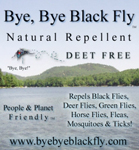Thanks to Emily MacCabe at Inland Fisheries & Wildlife for this information.
Below is information that should help everyone live harmoniously with wildlife, including fawns, moose, Piping Plovers and others. We encourage people to follow these steps for the protection of themselves and wildlife – and to appreciate wildlife and their behaviors from afar.
This is the time of year when many members of the public encounter baby fawns, robins, raccoons and other young wildlife in their back yards and woodlands.
Because wild animal parents can’t hire babysitters, and must leave their youngsters alone while they search for food, people often stumble upon a fawn hidden in the leaves on the forest floor, young birds taking their first flights, or young raccoon and fox kits wandering a bit too far from the home den.
Young wildlife is often ‘kidnapped’ by well-meaning people in the mistaken belief that they have been abandoned. The mother-young bond is very strong in mammals and birds, and parents will return given the opportunity to do so with out human interference.
In most instances, if you come across any healthy young wild animal or bird, leave it alone! The mother will come back to care for it, as long as humans move a distance away to let the family reassemble. If you have pets, put them inside your home or leash them so they can’t disturb the young wildlings.
If, however, you think an animal may be orphaned, please call an IF&W regional biologist to see whether that is the case. Please, do not pick it up and take it home. Wild birds and mammals do not make good pets; and it’s against the law to possess them without the proper state and federal permits.
Every spring, moose calves and deer fawns are brought to the Maine Wildlife Park in Gray or to wildlife rehabilitators and the majority of them are not orphans. Here is what you should do if you see young wildlife or birds:
Fawns and Moose Calves: If you encounter a fawn, leave it alone! Adult mother does return only 2-3 times a day to young fawns to nurse them, otherwise leaving them stashed in a protected place and relying on their camouflage and lack of scent to protect them from predators. As soon as fawns are able to keep up with mom, they travel more with her as she forages for food.
Squirrels or Raccoons: If a nest of squirrels or raccoons must be disturbed, (for example if a tree has been cut down or fallen) leave the young in the den part of the tree and leave them nearby in a protected place. The mother will in all likelihood come back and transport them to a new location.
Birds: The same is true for a bird’s nest. Put the nest and nestlings into a nearby tree, supported in a basket or other container that has drainage. The mother robin or blue jay is probably right around the corner, and will return to feed the young and care for them until they can fly on their own.





